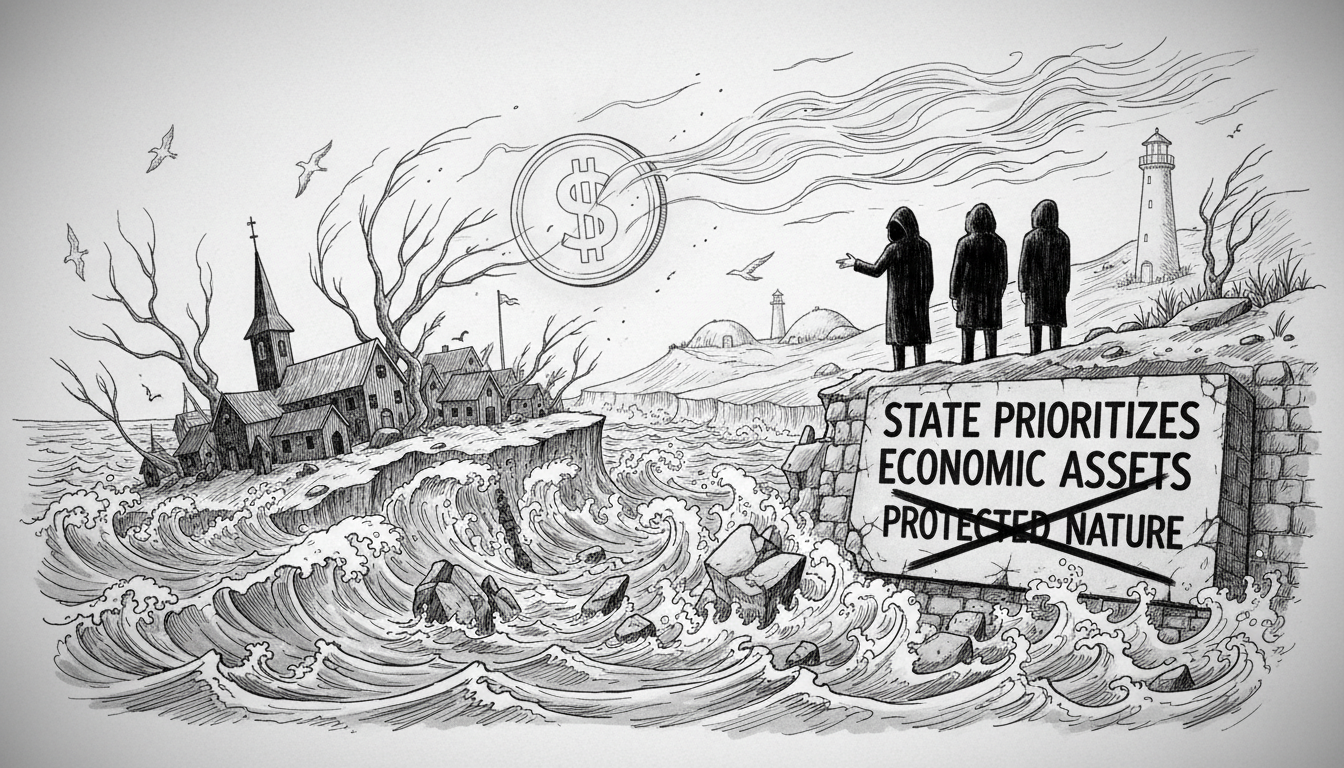Denmark's coastal protection system faces growing criticism for prioritizing economic value over environmental and cultural preservation. Protected natural areas and historic towns receive no government support for coastal defense projects unless they demonstrate clear financial worth.
In Northern Jutland, the protected dune landscape near Tversted disappears at an alarming rate of approximately ten meters annually. Søren Homann, chairman of the Technical and Environmental Committee in Hjørring Municipality, recently showed journalists the endangered area where he searches for specimens of the rare Geranium sanguineum flower, known locally as blodrød storkenæb.
This unique habitat serves as the only permanent residence in Denmark for the endangered Black-brown Blue butterfly, which depends on the specific flowering plant. Despite its ecological significance, the municipality cannot secure state funding for coastal protection because the area lacks recognized economic value in the national coastal protection scheme.
Homann expressed frustration with the current system. "You can rebuild a house and reconstruct a bridge. You cannot do that with nature. This is completely unique. If it disappears, it might not return," he said in a statement.
The problem extends beyond natural areas to cultural heritage sites. Ribe, recognized as the oldest town in the Nordic region, faces similar challenges. The historic center contains 143 protected buildings and the famous Ribe Cathedral, all threatened by flooding. During recent flooding events, 20-30 people worked through an entire night with pumps to keep water masses out of the town.
Bodil Ankjær Nielsen, climate adaptation coordinator in Esbjerg Municipality, explained the fundamental problem. "It's problematic that cultural heritage isn't considered worth protecting. It's important for our identity, and it also has derived economic effects on the local community," she stated.
Climate professor Sebastian Mernild from SDU Climate Cluster questions the narrow economic focus of coastal protection funding. "When climate changes take away parts of culture and nature, it matters for a society. Therefore we need to have a discussion about what's important," Mernild said. He suggests Denmark needs a more nuanced approach where some areas receive protection while others might need to accommodate rising waters.
The situation reveals a contradiction in Danish legislation. The Flooding Act specifically states that its purpose includes reducing negative consequences of flooding for both "environment" and "cultural heritage." Yet municipal officials report these considerations don't translate into practical funding decisions.
Environmental Minister Magnus Heunicke has acknowledged the criticism and arranged discussions with multiple parties about potentially supporting projects that consider nature, environment, and culture. The Ministry of Environment clarified that just because environmental and cultural protection appear in the law's purpose statement doesn't necessarily mean they must serve as criteria for funding decisions.
This approach leaves municipalities like Hjørring in a difficult position. Homann notes they lack unlimited municipal funds for such projects. "We would like help so our nature and beaches don't disappear. This is a big task, and we don't have unlimited amounts in the municipal budget. Money for this has to come from something else," he explained.
The Coastal Directorate's calculations don't currently identify Tversted as an erosion-threatened stretch, though Hjørring Municipality contends this relies on outdated data. The directorate acknowledges some calculations use older information but maintains they remain valid for determining which coastal sections qualify for protection funding.
Homann remains cautiously optimistic about future support but notes significant coastline has already vanished since the municipality first alerted the Coastal Directorate to the problem years ago. "It's a bit unfortunate that something only happens when journalists tap politicians on the shoulder," he observed, highlighting the distance between local realities and central government decision-making.
The debate touches on fundamental questions about what society values and protects as climate change accelerates coastal erosion. With Denmark's 8,750 kilometers of coastline increasingly vulnerable, the current system's narrow economic focus may require reconsideration to preserve both natural habitats and cultural landmarks that define the nation's identity.

